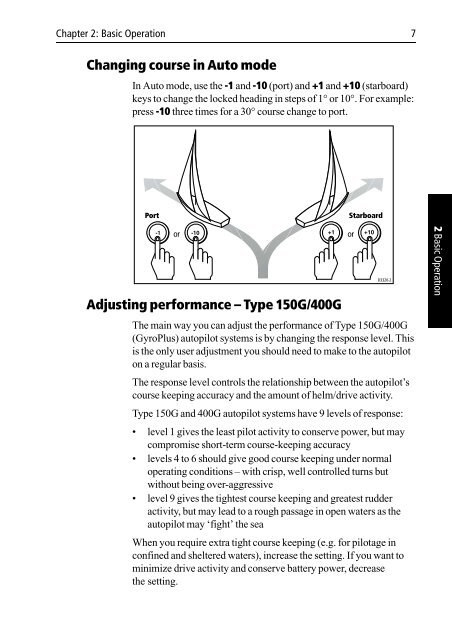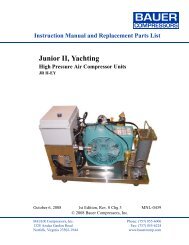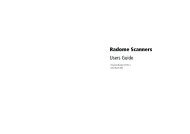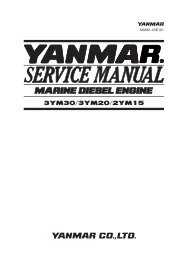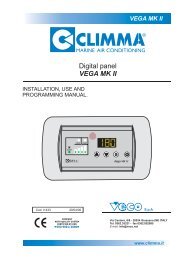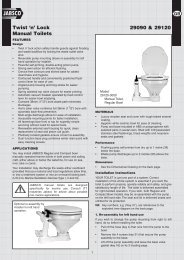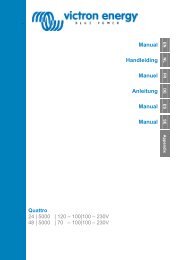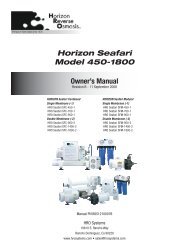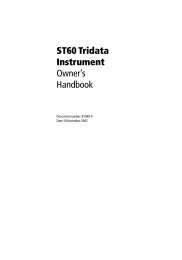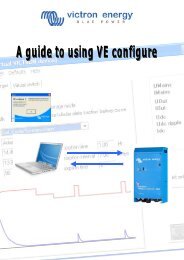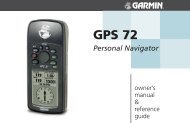Raymarine ST6001 - Zanshin
Raymarine ST6001 - Zanshin
Raymarine ST6001 - Zanshin
Create successful ePaper yourself
Turn your PDF publications into a flip-book with our unique Google optimized e-Paper software.
Chapter 2: Basic Operation 7<br />
Changing course in Auto mode<br />
In Auto mode, use the -1 and -10 (port) and +1 and +10 (starboard)<br />
keys to change the locked heading in steps of 1° or 10°. For example:<br />
press -10 three times for a 30° course change to port.<br />
Port<br />
Starboard<br />
or<br />
Adjusting performance – Type 150G/400G<br />
The main way you can adjust the performance of Type 150G/400G<br />
(GyroPlus) autopilot systems is by changing the response level. This<br />
is the only user adjustment you should need to make to the autopilot<br />
on a regular basis.<br />
The response level controls the relationship between the autopilot’s<br />
course keeping accuracy and the amount of helm/drive activity.<br />
Type 150G and 400G autopilot systems have 9 levels of response:<br />
• level 1 gives the least pilot activity to conserve power, but may<br />
compromise short-term course-keeping accuracy<br />
• levels 4 to 6 should give good course keeping under normal<br />
operating conditions – with crisp, well controlled turns but<br />
without being over-aggressive<br />
• level 9 gives the tightest course keeping and greatest rudder<br />
activity, but may lead to a rough passage in open waters as the<br />
autopilot may ‘fight’ the sea<br />
When you require extra tight course keeping (e.g. for pilotage in<br />
confined and sheltered waters), increase the setting. If you want to<br />
minimize drive activity and conserve battery power, decrease<br />
the setting.<br />
or<br />
D3320-2<br />
2 Basic Operation


